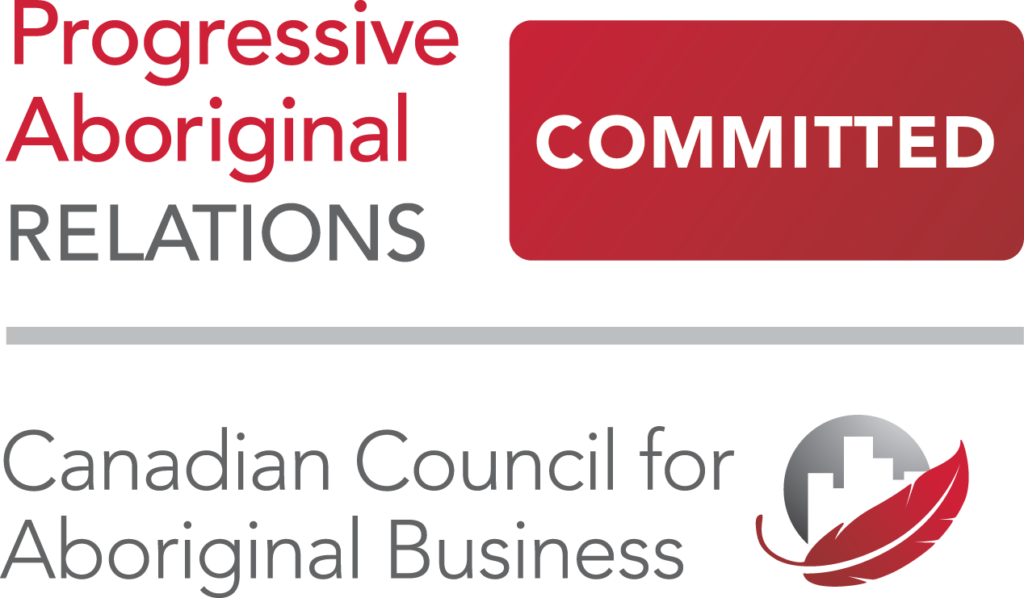In the competitive landscape of travel, companies continuously strategize on ways to capture the attention of consumers. Yet, the considerable expenses linked to traditional advertising demand upfront payment, offering no assurance of traffic, bookings, or increased brand awareness.
Now, if you decide to create a travel affiliate program for your brand, we’ll guide you through the process of building it correctly. The following key steps are designed to set you on the path to success.
1. Distinguish your travel brand and define your ideal customer profile.
Building anything that lasts requires a strong foundation, and that foundation begins by understanding who your brand is and what your ideal customer looks like. Afterall, to develop a successful travel affiliate program, you will need affiliates. Before we go looking for the right affiliates (see #5) it is important to not only define who you are as a brand but also who you want to reach. This will help focus recruitment efforts and also allow affiliates to target audiences.
Creating a strong brand profile involves incorporating key aspects of your brand’s identity, like logos and colors. You’ll want to make sure it encompasses detailed brand descriptions, both long and short, as well as the integration of your mission statement. Anything that makes your brand unique and captures your distinctive voice should also be included in this profile, as it plays a vital role in setting you apart from others in the market. This comprehensive approach not only distinguishes your brand but also attracts affiliate partners who resonate with your brand identity. Understanding not only the brand product offering but also the brand voice will help create a program that is aligned with your other marketing channel efforts.
2. Identify clear goals and objectives for the affiliate program.
Answer the following questions to help your affiliate manager or outsourced program management agency (like AIM) make educated decisions to achieve the most successful outcome. Understanding the brand’s goals for the program helps determine which affiliate network is best suited for your brand needs. These same insights guide the technical integration plan and serve as crucial components in the development of the overall affiliate program strategy.
- What are your business objectives for the program?
- Which key performance indicators is the brand focused on?
- Do you have specific goals or targets regarding affiliate recruitment?
- How will the affiliate program fit into the brand marketing strategy?
- Do you have other goals, targets, or guidelines?
- How will you define the success of the affiliate program?
The Key Performance Indicators (KPIs) a program is built on are only the first set of goals against which performance is tested, measured, and evaluated. It is important to evaluate targets and goals regularly to ensure affiliate program performance aligns with the overall brand goals and initiatives.
3. Make sure you have the necessary resources (both personnel and financial) available to get the program up and running.
The creation and launch of a new affiliate program often require contributions from technical teams, website developers, and creative, design, content, and finance teams to name a few. Once you begin communication with affiliate networks, include technical resources as early as possible to ensure any technical challenges are identified and resolved quickly. As plans begin to take shape with network selection underway, make sure to review your internal resources for availability to ensure all of the pieces are in place before launching.
Finally, have a solid understanding of the financial resources available. What is the budget dedicated to not only launching this affiliate program but to maintaining and hopefully growing it? The budget does not need to be set in stone; however, it is crucial to have a solid understanding of profitability margins and desired return on ad spend (ROAS) at a minimum. These factors serve as excellent starting points for effective financial planning.
4. Choosing the right affiliate network and setting it up properly are the keys to long-term success.
Shop around when evaluating affiliate networks to make sure you find one that meets your needs. Request walk-through demonstrations from more than one and come prepared to ask questions about the service, best practices, technical requirements, and reporting to ensure they align with your internal systems. Before signing contracts with any affiliate network, make sure to involve your technical team. This ensures that the technical plan not only captures all desired data points throughout your customer journey but also guarantees seamless integration with your website, internal programs, and systems.
Setting up an affiliate travel program is often individualized to meet the brand’s requests, occasionally with less-than-ideal results. Make sure to ask your chosen affiliate network to share their best practices to ensure that your affiliate program is set up for success.
Contracts should be constructed to protect both the brand and the affiliates, guaranteeing fair compensation for clearly outlined deliverables. Most affiliate travel programs offer a revenue share for travel booked and consumed that originated from an affiliate’s tracking link. Affiliate contracts should clearly identify all stages of the consumer journey from booking to concluded travel. However, the revenue share should only compensate affiliates after the travel has concluded. Paying affiliates for booked travel not only increases the probability that the brand will pay commission for canceled travel, but it also increases the likelihood that the program could fall prey to fraudulent bookings. Finally, carefully craft program terms to outline not only the payment terms but also the rules and regulations that all affiliates must follow to remain in good standing.
5. Capturing the attention of and selecting the right affiliates.
Visible to prospective affiliates, the public affiliate commission offer should be clear and competitive with brands in the niche, while being mindful of cost margins and ROAS goals. Travel affiliates, much like others, vary significantly, prompting the use of diverse commission rates and tracking windows for different affiliate types. This approach is often employed to incentivize content affiliates, who typically capture interest at the top of the consumer journey. In contrast, deal affiliates, situated lower in the funnel, boast a higher conversion rate.
Successful affiliate programs will have a strong mix of affiliates that engage consumers through the consumer journey, this is especially important for travel brands due to the extended consumer journey before booking travel. A recent study from Expedia showed in the 45 days prior to booking, travelers view 141 pages of content and consume 303 minutes of travel content distributed throughout the path to purchase. These rates increase for US travelers who view 277 pages of content and consume a staggering 524 minutes (8 hours and 44 minutes) of travel content in the 45 days prior to booking. The extended pre-booking exposure is why selecting affiliates that align with your brand identity and whose audience includes travelers that match your brand’s ideal customer profile (the foundational work from #1) is paramount to the success of your affiliate program.
Which affiliates are the right affiliates? The answer is unique to every brand, however, a mix of content affiliates (bloggers), review sites, social media, mass media sites, loyalty/cashback, closed user groups, deal sites, and more will deliver travelers back to a brand throughout those 45 days of increased visibility prior to booking. The most important factor when evaluating affiliates is making sure they fit with your brand values and can drive meaningful traffic to your brand’s website. Other factors to consider when evaluating affiliates are site traffic, frequency of posts, the existing content, any connected social media sites, and links to (connections with) other websites.
6. Optimization through clear communication leads to conversions.
Growing and maintaining your affiliate program can be the most challenging part for many brands and is the part where having a skilled and experienced affiliate team can streamline the path to success. Keeping up with regulations, technology, and new partner types, is where expertise is truly essential. As well as optimizing affiliate partners to maximize their effectiveness. In most cases increasing their contribution and conversions starts with the relationship.
Here’s how the experts do it…
Provide affiliates with all necessary tools for success and ensure they understand how to access and use them. Quick and thorough communication is essential, including clear program guidelines, legal terms, and an understanding of affiliate promotion strategies and channels. New affiliates should receive prompt support and guidance, including a how-to guide for utilizing brand assets and promotional materials, as well as access to educational resources such as videos or infographics provided by the affiliate network.
Effective communication is key! It fosters a sense of partnership and investment in affiliates’ success. Regular updates and inclusion in promotional plans help affiliates feel valued and part of the team. Keep affiliates informed through newsletters and personalized emails, maintaining open lines of communication to support their growth and success. Engaged affiliates equipped with the tools and information they need play a vital role in driving traffic and conversions, highlighting the importance of nurturing strong relationships with affiliates from the outset.
7. Enhancing a travel affiliate program beyond rules, tools, and communication for long-term success.
Maintaining a travel affiliate program and growing it for long-term success requires regular monitoring of individual affiliate performance and compliance. Diving into the data to study which partners are succeeding and learning how to repeat those results for other affiliates that are not seeing the same success.
Review program settings and tracking integration at least once a year to ensure everything is up to date with current technology and make sure any necessary updates are addressed quickly. Keep on top of any industry or legal regulations, and review and update terms and conditions annually. This is to ensure affiliates are staying compliant with all rules and regulations. Make sure brand assets are updated regularly and that those updated assets are shared with all affiliates. Finally, keep track of industry trends and make sure to share that information with your affiliates.

In summary, a thriving travel affiliate program proves to be a smart and efficient approach to fostering growth within the dynamic travel sector. It all begins with establishing a solid foundation through defining your brand and understanding your target audience. From there, setting well-defined objectives and securing the necessary resources become pivotal. The next steps involve meticulously selecting the appropriate affiliate network and cultivating a diverse pool of affiliates. Through transparent communication and unwavering support, these affiliates are empowered for optimal performance, ultimately driving the program’s success.
However, success extends beyond launch. Continuous monitoring, data analysis, and adaptation to industry trends are essential for long-term success. Regular reviews of affiliate performance and program settings, along with keeping affiliates informed and engaged, contribute to sustained growth. In the ever-evolving travel landscape, an effective affiliate program establishes lasting partnerships, making affiliates integral to your brand’s success and unlocking its full growth potential.










